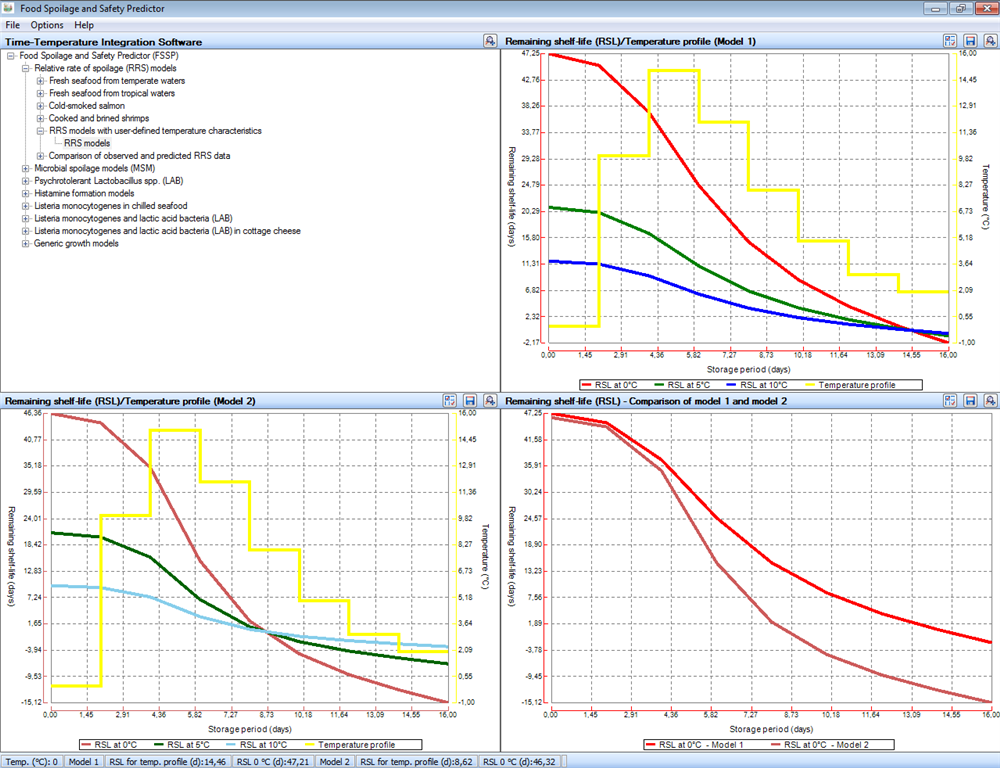|
|
| Model |
RRS
models with user defined temperature characteristics |
| Reference | Dalgaard, P. 2002 . Modelling and predicting the shelf-life of
seafood. Chapter 12 in Safety and Quality Issues in Fish Processing.
Bremner, H.A. (ed). Woodhead Publishing Ltd. pp.191-219. |
| Factor(s) in model | Temperature |
| Range of applicability | Not
studied - depends
on selected model and temperature characteristic (See other RRS models in FSSP) |
| Product validation studies | Not
studied |
| In addition to RRS models with fixed temperature characteristics corresponding to specific types of seafoods FSSP also include RRS-models with user-defined temperature characteristics. These flexible RRS-models allow FSSP to predict shelf-life at different temperatures for any food product where spoilage kinetics have been determined and the temperature characteristic is known to the user of FSSP. Users of FSSP can select (i) the Exponential-spoilage model (eqn. 1) and enter a slope parameter ('a'-value), (ii) the Arrhenius-spoilage model (eqn. 2) and enter an apparent activation energy (Ea-value), or (iii) the Square-root spoilage model (eqn.3) and enter a Tmin value. |
|
|
| Two models can be selected at the same time and this allows FSSP to be used (a) to compare two different temperature characteristics used with the same model or (b) to compare two different models with fixed temperature characteristics as shown in the FSSP screen just below for a product with a shelf-life of 21 days at 5°C. |
 |
| For the food product with shelf-life of 21 days at 5°C the FSSP screen above shows the predicted shelf-life at 0°C to be similar when using the square-root model with a Tmin-value of -10°C (47.2 days) or the Arrehnius model with an apparent activation energy of 100 kJ/mole (46.4 days). However, the Arrhenius models predicts considerably shorter shelf-life at 15°C due to the high apparent activation energy of 100 kJ/mole selected for that model. |
| FSSP allows the effect of temperature profiles on product shelf-life to be predicted by the RRS-models with user-defined parameter values. For a temperature profile with storage temperatures between 0°C and 15°C, the FSSP output window below clearly shows how the Arrehnius model with an Ea-value of 100 kJ/mole (Model 2) result in shorter predicted shelf-life than the square-root model with a Tmin-value of -10°C (Model 1) although the two models both predicted a shelf-life of approximately 47 days at 0°C. |
 |